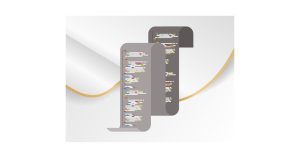
In CSS, the background property is used to set the background styles for elements. You can define background colors, images, gradients, and even manage how these backgrounds repeat, position, and fit within the element.
Syntax for the background Property:
background: [background-color] [background-image] [background-repeat] [background-attachment] [background-position] [background-size];
You can specify one or more of the following properties in any order. Here’s an overview of each part:
background-color: Defines the background color of an element.background-image: Defines an image as the background.background-repeat: Defines whether the background image repeats.background-attachment: Specifies whether the background image scrolls with the page or stays fixed.background-position: Specifies the starting position of the background image.background-size: Defines the size of the background image.
Example 1: Background Color
div {
background-color: lightblue;
}
This will set the background color of the div element to light blue.
Example 2: Background Image
div {
background-image: url('path/to/image.jpg');
}
This sets a background image for the div. The url() function specifies the path to the image.
Example 3: Background Repeat
By default, the background image repeats both horizontally and vertically. You can change this behavior using the background-repeat property:
div {
background-image: url('image.jpg');
background-repeat: no-repeat;
}
This will prevent the background image from repeating. Other options for background-repeat include:
repeat: Repeats both horizontally and vertically (default).repeat-x: Repeats only horizontally.repeat-y: Repeats only vertically.no-repeat: No repetition.
Example 4: Background Attachment
The background-attachment property determines whether the background scrolls with the page or remains fixed in place.
div {
background-image: url('image.jpg');
background-attachment: fixed;
}
This will make the background image fixed relative to the viewport, and it will not scroll when the page is scrolled.
Other values for background-attachment:
scroll(default): The background scrolls with the content.fixed: The background is fixed and does not move with the page.
Example 5: Background Position
You can position the background image using the background-position property.
div {
background-image: url('image.jpg');
background-position: top right;
}
This will position the background image at the top-right corner of the div. You can also use specific values like px, %, or em for precise positioning. For example:
background-position: 50% 50%: Centers the background image.background-position: 10px 20px: Positions the background 10px from the left and 20px from the top.
Example 6: Background Size
The background-size property defines the size of the background image.
div {
background-image: url('image.jpg');
background-size: cover;
}
This will make the background image cover the entire area of the div while maintaining its aspect ratio. Other values include:
contain: Resizes the background image to fit within the element while maintaining its aspect ratio, ensuring that the entire image is visible.- Specific values like
100px 100px: Allows you to set a custom size for the background image.
Example 7: Combined Background Properties
You can combine multiple background properties in a single shorthand declaration:
div {
background: lightblue url('image.jpg') no-repeat fixed center / cover;
}
This shorthand defines:
background-color:lightbluebackground-image:url('image.jpg')background-repeat:no-repeatbackground-attachment:fixedbackground-position:centerbackground-size:cover
Example 8: Gradient Background
You can use CSS gradients as backgrounds, which allow for smooth color transitions.
div {
background: linear-gradient(to right, red, yellow);
}
This creates a linear gradient that transitions from red on the left to yellow on the right. Other types of gradients include:
linear-gradient(): A gradient that moves in a straight line (can specify direction).radial-gradient(): A gradient that radiates outward from a center point.
Example 9: Multiple Backgrounds
You can use multiple background images for a single element by separating them with commas.
div {
background: url('image1.jpg'), url('image2.png');
}
This will set two background images, one on top of the other. You can also define different properties for each background (like position, size, etc.).
div {
background: url('image1.jpg') no-repeat center, url('image2.png') no-repeat top right;
}
Conclusion
CSS provides powerful tools for styling backgrounds, including colors, images, gradients, and even complex combinations. By using various background properties like background-color, background-image, background-repeat, background-position, and background-size, you can create visually appealing and responsive designs.

